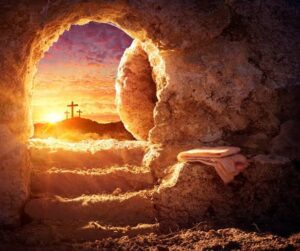
Unveiling Easter: The Hidden Mysteries and Surprising Traditions Behind the Celebration
Find out what you never knew about Easter.
As Easter approaches, millions around the world prepare to celebrate with egg hunts, chocolate bunnies, and family gatherings. But beneath the surface of this beloved holiday lie a plethora of intriguing mysteries and surprising traditions that many people may never have heard of. From ancient rituals to modern-day customs, Easter is full of hidden secrets waiting to be uncovered.
One of the lesser-known aspects of Easter is its deep roots in ancient pagan festivals. Long before the advent of Christianity, cultures around the world celebrated the arrival of spring with festivals honoring fertility gods and goddesses. These pagan traditions, which often involved the lighting of bonfires, the decorating of eggs, and the worship of nature spirits, were later incorporated into the Christian celebration of Easter, giving rise to many of the customs we observe today.
But Easter isn’t just about colorful eggs and fluffy bunnies – it also has a darker side. In some cultures, Easter is associated with a centuries-old tradition known as “egg tapping” or “egg fighting,” in which participants compete to see whose egg can withstand the most force without cracking. This seemingly innocent game has its origins in ancient fertility rites and symbolizes the struggle between life and death, light and darkness.
Another fascinating Easter tradition that many people may not be aware of is the practice of “pace egging” or “egg rolling.” Originating in England, this centuries-old custom involves rolling eggs down a hillside or slope, with the aim of reaching a designated finish line. The winner of the race is said to have good luck for the coming year, while the loser must perform a forfeit or penalty. Pace egging is still practiced in some parts of the UK today, keeping alive a tradition that dates back centuries.

In addition to these ancient customs, Easter is also a time for modern-day celebrations and festivities. In many countries, families gather to enjoy special meals and feasts, featuring traditional dishes like roast lamb, hot cross buns, and Easter cakes. Children eagerly anticipate the arrival of the Easter bunny, who is said to deliver baskets filled with candy and treats. And no Easter celebration would be complete without attending church services, where worshippers gather to commemorate the resurrection of Jesus Christ.
But perhaps the most intriguing aspect of Easter is its connection to the mysterious phenomenon known as the “Easter Island heads.” These giant stone statues, which are scattered across the remote island of Rapa Nui in the Pacific Ocean, have puzzled archaeologists and historians for centuries. Believed to have been created by the island’s indigenous inhabitants between the 13th and 16th centuries, the Easter Island heads are thought to represent ancestral spirits or deities, but their exact purpose and significance remain shrouded in mystery.

As Easter approaches, take a moment to ponder the hidden mysteries and surprising traditions behind this beloved holiday. From ancient pagan rituals to modern-day customs, Easter is a celebration rich in history, symbolism, and intrigue. So whether you’re rolling eggs down a hillside, attending church services, or simply enjoying time with family and friends, remember that Easter is so much more than meets the eye – it’s a time to uncover the secrets of the past and embrace the wonder of the present.
Leave a Reply